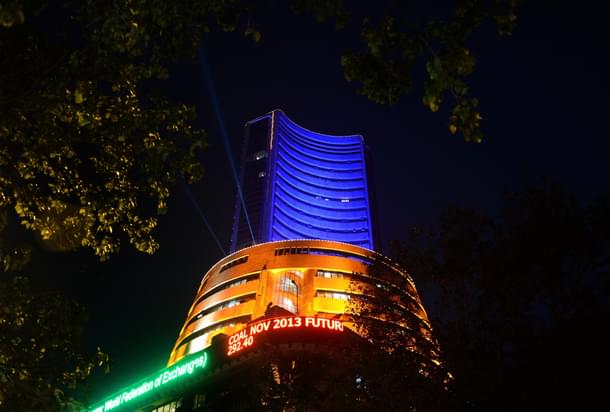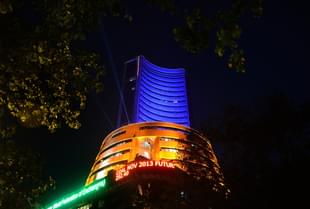Business
Liquidity Is Driving Sensex And IPO Boom, And It Looks Like Party May Last Awhile
R Jagannathan
Jul 18, 2017, 12:58 PM | Updated 12:55 PM IST
Save & read from anywhere!
Bookmark stories for easy access on any device or the Swarajya app.


As the Nifty heads for the 10,000 mark, and the Sensex looks for glory beyond 32,000, it is time to pause and ask ourselves what is going on.
Two things principally.
First, this rally is being driven by excess liquidity, with the supply of good scrip being outpaced the availability of funds chasing them. Whether it is foreign institutional investors, or domestic institutions (mutual funds, LIC, the EPFO, etc), it is the volumes of cash coming in that is propping up share values, not necessarily fundamentals. At current index levels, Nifty values are being discounted 19 times next year’s (2018-19) expected earnings.
This is rather a precarious perch for the index, and the index could thus stumble if liquidity either thins down, or fundamentals don’t rise to meet expectations. But right now we have not received any signal that funds will dry up, as this rally has two legs. Till a few days ago, the foreign institutional investors (FIIs) put up Rs 55,000 crore net into equity, which was nearly matched by domestic institutions with close to Rs 44,000 crore. In six months, we have seen Rs 100,000 crore pour into equity, and even more hundreds of crores are waiting in the wings.
Second, supply of new scrip is rising, but not fast enough. This is evident from the huge over-subscriptions to recent initial public offers (IPOs) and their subsequent prices. Most IPOs, despite being aggressively priced, drew subscriptions that were 50-100 times the amounts offered, and listing prices reflect this high demand for good scrip. Avenue Supermarkets (D Mart) is quoted 205 per cent more than the IPO price, AU Small Finance Bank at double the price, CDSL 154 per cent higher, and Shankara Building Products (Shankara what?) at 111 per cent the IPO price, says an Economic Times report. Even unexciting Hudco, a public sector entity, is quoting at 50 per cent more than its issue price.
The undersupply situation could change once a deluge of IPOs from the financial sector hits the market, including UTI Asset Management Company, SBI Life, HDFC Standard Life, the General Insurance Corporation and New India Assurance, among others. Together they will be raising Rs 30,000-50,000 crore, depending on how much they choose to offer in their IPOs. Then there could be other private companies eyeing the same bonanza from the primary markets. SBI Life, UTI and HDFC Life may between them raise Rs 20,000 crore.
What is clear is that good quality shares are now going to be available, and given the large pool of investible money, both domestic and foreign, these IPOs are likely to remain blockbusters.
That brings us to the downsides of the current stock market rally.
If IPOs suck out a large amount of available resources, it is quite possible that the secondary market will sag after a point, unless corporate profits show any sudden spike. If the latter happens, the rally will sustain.
If FIIs start pulling out based on global cues – the US market could well start showing signs of strain as the Fed starts raising rates – the domestic markets will certainly be impacted. Dalal Street is not immune to cold winds from Wall Street.
On the plus side, the factors are these.
There is little doubt that the Reserve Bank of India has to cut rates due to lower retail inflation. This means shares could rally a bit more in early August, when the next monetary policy meeting is scheduled.
The implementation of goods and services tax has so far been smooth. If revenues do not tank, and if further dissent over the new tax is muted, we can expect demand for shares to remain strong well into the busy season that begins around Diwali, and may continue until March 2018.
If the Gujarat elections provide us no upsets – which means the BJP wins comfortably – the markets will be assured that Narendra Modi is here to stay.
On balance, this rally is far from over, though it is driven primarily by liquidity. The lesson from the US between 2008 and now is that liquidity pools are large enough to drive rallies for pretty long stretches of time. No need to assume this time it will be different.
But stay watchful. Both for any new turn in domestic politics, or any deterioration on our borders with Pakistan and China. War, even limited war, is the one fly we can’t afford in the ointment.
Jagannathan is former Editorial Director, Swarajya. He tweets at @TheJaggi.





